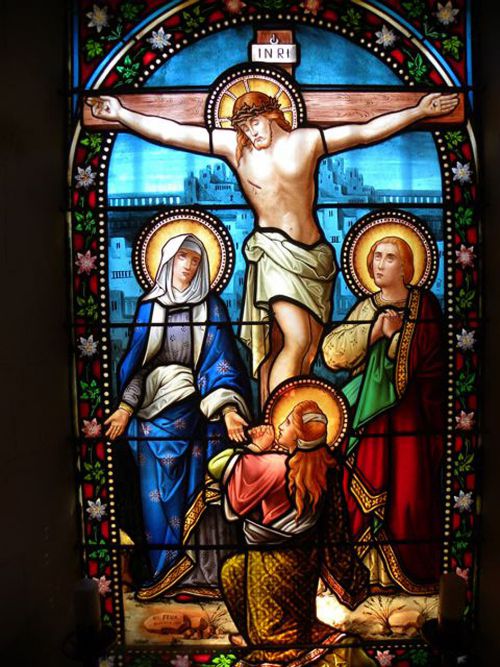MARY MAGDALENE- Eternal Goddess?
Has Mary Magdalene become an eternal goddess?
Many people believe so. Let’s analyse this.
Mary Magdalene was a real human being, who existed in history, as, indeed, did Jesus. Gods and Goddesses, as a rule, have always lived in heaven, never on earth. But Mary Magdalene was a historical person. Can a real person who existed in history become a God or Goddess later?
Some people say Mary Magdalene is a reincarnation of Isis, the Eternal Goddess. In character Mary Magdalene does seem close to Isis. 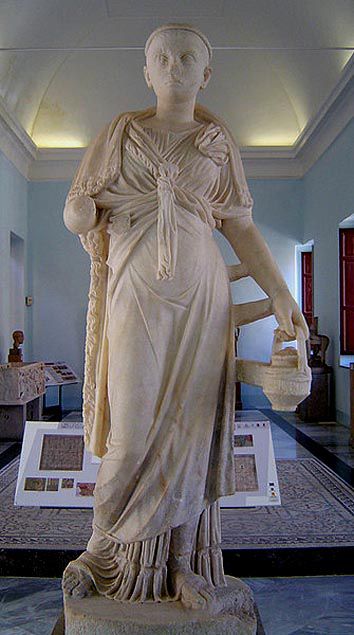
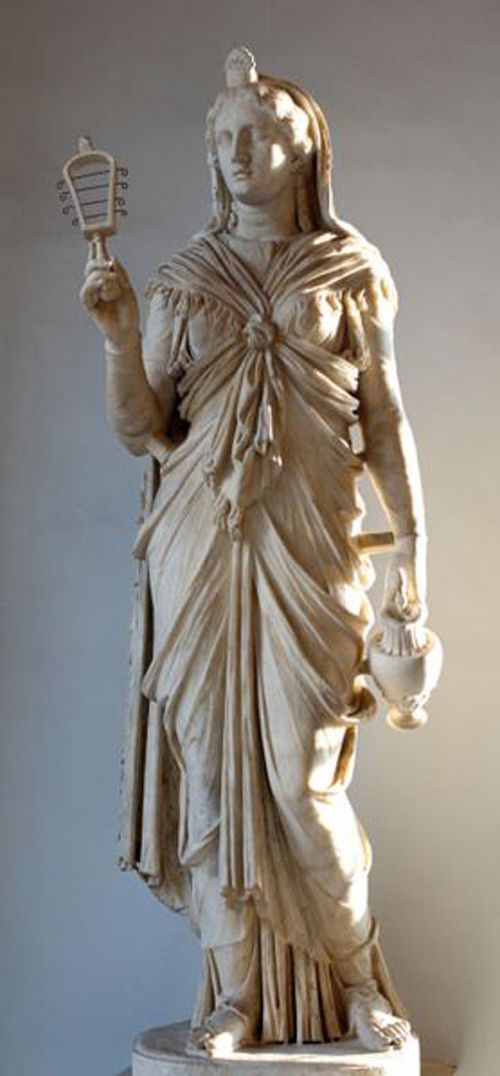 Statues of Isis. Evoking Mary Magdalene
Statues of Isis. Evoking Mary Magdalene
Isis ruled healing and the magic arts. She is connected with ships and rode in her great ferryboat, ferrying the souls of humans to Heaven. Her mate that she was devoted to was called Osiris, the son she had by him called Horus. Isis said; I am Nature, the universal mother, sovereign of all things spiritual, queen of the dead, queen of the immortals, the single manifestation of all gods and goddesses that are. Though I am worshipped in many aspects, known by countless names, yet the whole round earth venerates me. Call me by by true name, that is, Queen Isis. (Apuleius, The Golden Ass, translated by Robert Graves.)
Isis also said; Come unto me all you who are heavy laden, and I will give you rest. These words were adopted by Jesus in his teachings.
Isis was an Egyptian mother figure, mother of Horus, whose father Osiris had been restored to life by Isis after his death so that she could bear his child. Isis was identified with Aphrodite or Venus and her religion arrived in Rome during the first century BC and was flourishing within 100 years throughout the Empire.
The cult of Isis was a mystery religion, requiring initiation, baptism and service. It promised eternal salvation. A goddess of fertility and marriage, Isis was loving and compassionate to individual supplicants.
Shrines and temples to Isis proliferated throughout the Roman empire, for 500 years. The town of Istres in Provence was named after her. Notre Dame in Paris was built on top of a temple to her. Many of the temples to Isis became churches dedicated to Mary Magdalene, as was the church at Rennes-le-Château, and some became dedicated to the Virgin Mary.
The Isis cult believed that the goddess Isis had the power to bestow eternal life, for her temple in Egypt carried the inscription I am all that was, that is, and that is yet to come. This is a Gnostic saying about the Eternal Mother Goddess, as we can read in the Gnostic Gospels by Elaine Pagels, and also a saying that was used by Jesus and Mary Magdalene. Many think they studied in Alexandria or were influenced by Egyptian teachings and religion of the time.
Today, some people identify Isis and Mary Magdalene so strongly with each other, that they have come to believe they are the same. As concepts, forgetting that one was a human person but the other wasn’t, they are certainly similar; they were both “all woman”, that is they had the characteristics of the perfect woman, virgin, wife, mother, lover, all rolled into one.
But can a sexually active woman be a goddess, can she be “without sin”?
This was an eternal problem with the Christian Church, which for a long time defined sex and sin as the same. To the Jews, the first ever “goddess”, certainly the first woman, was Eve in the garden of Eden, with whom Mary Magdalene is often associated. Eve, influenced by the serpent, had lured Adam into sin and then tried to hide her shame. Because of this “original sin” she was cursed with the pain of childbirth. After childbirth women had to be “churched” to forgive them their original sin in being sexual.
Some modern spiritual people tell me Isis was reincarnated from Eve and Mary Magdalene was reincarnated from Isis - the three are the same. Leaving aside the possibility of being reincarnated from a person who never existed as a human being, let us remember that Eve has always been thought of the person who brought evil into the world, while for centuries Mary Magdalene was also seen as ultimately sinful, living her life naked and alone in a cold cave, in repentance.
Many early saints became more holy if they were virgins; think of St. Catherine, or St. Anthony the Hermit, who spent most of his life, in the desert, resisting temptations from the Devil, designed to lure him into fornication. That was how people thought of things in those days. To be a saint, or a goddess, one had to be asexual - “of stainless purity” as it says in Ecclesiastes.
In the Roman church, Jesus and his mother became asexual and without sin; and because the Virgin Mary was without sin, they declared her mother must be too, in 1140. Anna was formally declared a Virgin who conceived by the Holy Ghost; even though she is not even mentioned in the Bible.
The patriachism of the Judaic religion, and Catholicism that followed it, wanted their goddesses to be “without sin.” By the time virgin fever had spread through the Roman Church, the words “without sin” came to mean “sexless, virgin.” This Immaculate Conception idea made it clear that virginity was worth more than all the intelligence, skill, courage and kindness of saints such as Mary Magdalene. Through its stories of Mary the Virgin and Mary Magdalene, Christianity pushed women into two roles; sacred virgin or profane harlot.
Many paintings have been done about Sacred and Profane Love, the two aspects looking remarkably like a sensuous Mary Magdalene or else a pious Virgin Mary raising her eyes to heaven. There is a clear divide . . . many men have a "whore/Madonna complex". They might say they admire Mary Magdalene and Isis for being "all woman" but often find they prefer virginal women in real life.
The psychologist Carl Jung was the first one to define typical archetypes of this sort in our lives and how they regulate us. Archetypes have always existed in religion because they have such a powerful appeal to the subconscious mind. Gods and Goddesses are “types” or symbols.
Mary versus Mary
My French friend Patrick tells me that French men “have a strong place in their hearts for the Virgin Mary”, thinking of her as the ideal Mother, always there, always tender, always caring. In the minds of many Catholics, the Virgin is much greater than Mary Magdalene, perhaps even greater than Jesus and certainly more than God.
There are many festivals to her throughout the Catholic year, the most recent being Assumption, declared in 1950 and celebrated in “Lady Chapels” everywhere on 15th August, now a public holiday. Since then it has been forbidden by the Vatican to attempt to search for the Virgin Mary’s bones. They cannot exist, because she ascended into Heaven, as Jesus did. (How it took them until 1950 to find this out is not explained.)
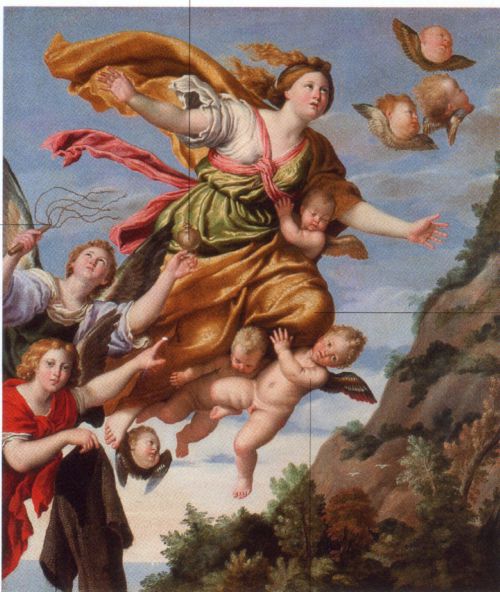 Mary Magdalene, not Mary the Virgin, being taken up to Heaven by angels
Mary Magdalene, not Mary the Virgin, being taken up to Heaven by angels
We are not told that she ascended into Heaven in the Bible. After the Crucifixion, which the Virgin Mary attended, she is strangely absent, except for a brief mention in Acts, 1,14. She was not there when the empty tomb was discovered; she was not there when Christ “ascended” into heaven, she was not visited by the risen Christ as were the disciples and she was not there at Pentecost when the disciples were inspired by the Holy Ghost. In short, she appears in the Bible as Jesus’s mother, as the bearer of God, simply a vessel responding to the “highest honour” ever offered a woman.
By making the Virgin Mary a woman who did nothing but act as a vessel for the seed of God, humankind has for centuries denied the creative power that all women possess, the power to create life itself and to nourish it.
Recently there has been much discussion about the possibility that Mary Magdalene and Jesus were married, and many Christians are outraged because this meant Jesus was sexual. Some people think Mary and Jesus had children; if so, this would define Mary and Jesus as fully human and not Gods. Think about it; if Jesus’s father was God, does God have DNA? If so, would his children had inherited it? “The Bloodline” as it is now known, could not have descended from Jesus the son of God, for God, as far as we know, has no DNA. Hence, if a bloodline exists, it shows that Jesus and Mary Magdalene were in no way divine and their descendants no way special because they were born of a God-King.
A tricky theological point!
Our point is that, as far as is known, Mary Magdalene was bright, intelligent, warm, sexual, caring, dedicated, maternal, courageous. She was called by Jesus, in the Gnostic gospels, the “Mother of all.” His concept of the trinity was not Father Son and Holy Ghost, but God the Father, the Mother of all, and the son. Jesus was not patriarchal; all the stories of him in the Bible, with various women, make it clear he treated them and spoke to them as though they were equals. To him, women symbolised something divine. In the Gnostic gospels, we are told the soul, whoever it belongs to, is feminine.
Psychology and mother worship
Many modern people believe in Mary Magdalene as if she is divine, not a normal human like the rest of us. But definitely sexual! The Magdalene was like Isis; she was the ideal mother but the ideal lover, devoted to her man.
But one often finds people prefer to separate the archetypes of Virgin and Erotic Lover in their goddesses. We have Isis and Mary Magdalene on one side - and the Virgin Mother on the other.
Worship of a Virgin Mother is very old. The concept of the Eternal Virgin had its beginning in Celtic or Druid Times. But theologically, it was different, for this Virgin was continuously pregnant, continually giving birth, continually creating; the world, the people, men and women, all were created by her and the lesson she could teach us was that everything is being re-created all the time; ourselves, our souls, our world, our children, our lives. This Eternal Virgin is sheer power, more powerful than God, one could argue, because he only created the world once and then stopped.
A Goddess is a concept, an idea, a creation of perfection that is worthy of worship. Isis never existed as a human being and neither did the God Jehovah; but Jesus, his mother Mary and his companion Mary were all real people that really existed. Concepts of them have been simplified until people worshipped an idea - an idea that could be personified in a painting or a statue.
There is an iconography, at one time severe in the Church, describing how the saints should be depicted. In the days when the majority of people had no education, statues and paintings were used by priests to explain the Bible stories. The Virgin wore blue and white and had her head covered; the Magdelene wore red or green or gold, her hair was long and curly, usually auburn, sometimes blonde, rarely black.
The "secret window" at Rennes-le-Château, with the Virgin in blue and Mary Magdalene in red, with long red hair. A classic representation.
The Virgin carried her boy-child while Mary Magdalene carried a jar of ointment for it was she who anointed Jesus. Sometimes she contemplated a skull (reflecting on mortality) or read a book, symbolising the gospel of St. John. She often carried a crucifix (since the 9th century) made of wood, representing her presence at the crucifixion.
Then there's the Black Madonnas - which Mary were they intended to be? The Virgin Mary or Mary Magdalene? Isis was often pictured as an Egyptian Queen, seated squarely on her throne with her child squarely on her knee, like many of the Black Madonnas of France. The originals of them could have been statues representing Isis.
Many goddesses existed in the pre-Christian world of the Roman Empire. Many of them were of Virgins (often very nasty Virgins who hunted down men and killed them) and many of them had a male child sitting on their knee. It wasn’t only the Virgin Mary and Isis who were pictured like this.
It is thought the Black Virgins of today were originally pagan or Roman mother-and-child statuettes in various places in France before Catholicism became widespread. It was not difficult for the Church to crown, clean and re-paint these statues, to keep their parishioners happy, calling them the Virgin Mary, the Mother of God.
Thus, although one of the original Black Virgin goddesses was Isis (the other being the Celtic goddess), the Church decided the Black Virgins were Jesus’s mother, and not Mary Magdalene, perhaps because of the child on her knee. Like Isis, the Virgin Mary was called “the Queen of Heaven” and “the Star of the Sea” - Stella Maris.
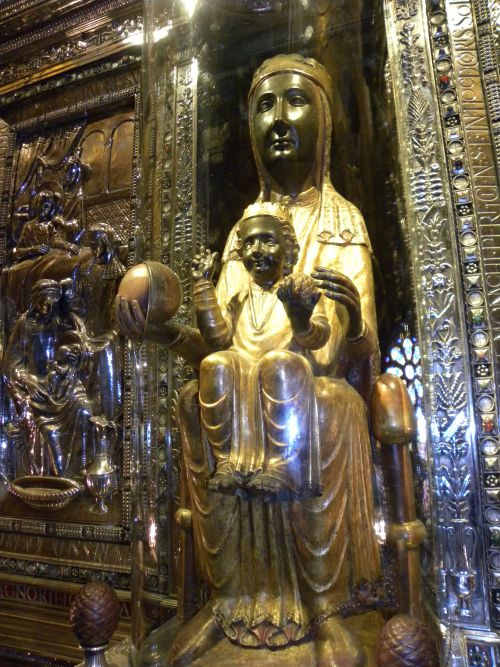 A beautiful Black Madonna at Montserrat, northern Spain. Photo courtesy Jaap Rameijer
A beautiful Black Madonna at Montserrat, northern Spain. Photo courtesy Jaap Rameijer
Some churches hang onto Black Virgins for historical interest and parade them only once a year. Others put them in the entrance hall of the church (as though the statues are begging to be let in the church proper) and often behind a grill because of the risk of theft.
Legends often say a Black Virgin was found buried in a nearby field to hide her from invaders such as Saracens of the 8th century, but very few are as old as that. Some statues are fragments that have been made into a Black Virgin, some of them were originally created as Black Virgins in the 12th century, and some of them have worked such cures that the people love them and will not let the priests dispose of them. Some modern sculptors are now creating Black Virgins. It has become a concept.
However, the Church is adamant that any statue of a goddess with a child in her arms or on her knee represents the Virgin Mary with her Holy Child, Jesus. And so it seems the title of the Eternal Goddess has been definitively won by the Virgin.
But that’s not good enough for the women of today. We need our Eternal Goddess to be sexually active, to be vibrant with feminine power, to be the Eternal Goddess that Gnostics described and worshipped as the beginning and end of all life in the world.
Some spiritual people think the Black Madonnas originally represented Mary Magdalene with Jesus’s child on her knee and certainly, more Black Madonnas have been found in the regions of France where Mary Magdalene was a popular saint, the correlation is very clear.
Mother with a child yes - Virgin, no.
Inscrivez-vous au site
Soyez prévenu par email des prochaines mises à jour
Rejoignez les 261 autres membres

